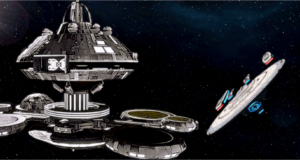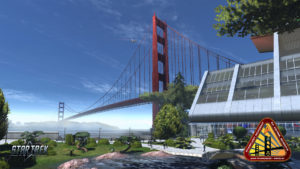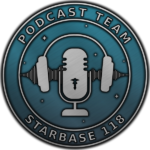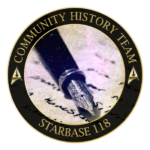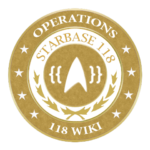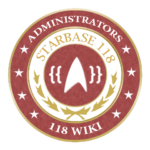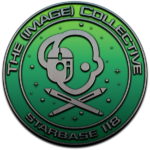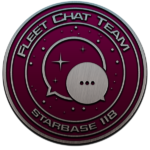Am I the only one holding five tabs next to my half-written sim to add science jargon and try to explain what is going on while still abiding to the laws of nature or am I just not made to be a science officer? Our lovely characters have had years of training at the Academy, but, sadly, we have not! So there is a gap between what our characters know and what we know. Let’s try to make that gap smaller, starting with: seismic activity.
Normal circumstances
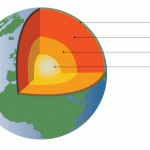 Under normal circumstances, a class M planet would look a bit like this from the inside. The crust would be divided in plates, which we call tectonic plates, and would drift on the mantle. The friction between plates, so at the fault lines, build up and when the stress becomes too much, it suddenly moves, aka seismic activity. In these areas also volcanic activity is very common.
Under normal circumstances, a class M planet would look a bit like this from the inside. The crust would be divided in plates, which we call tectonic plates, and would drift on the mantle. The friction between plates, so at the fault lines, build up and when the stress becomes too much, it suddenly moves, aka seismic activity. In these areas also volcanic activity is very common.
Nothing is Normal
So seismic activity takes place at fault lines, but what if it does not? There are some different scenarios.
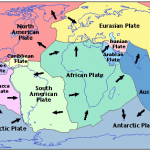 Firstly, you could be looking at the wrong scale. Look at this picture of the Eurasian and African plate. North Italy should have little worries about seismic activity, right? As you see in the picture below, there are a bunch of microplates in the area, which still make Italy a perfect place for seismic activity.
Firstly, you could be looking at the wrong scale. Look at this picture of the Eurasian and African plate. North Italy should have little worries about seismic activity, right? As you see in the picture below, there are a bunch of microplates in the area, which still make Italy a perfect place for seismic activity.
Secondly, you could be at a hotspot. Perfect example is Hawaii. It is not near any fault line, but the islands are actually just vulcanos, which come to existence because of weak spots (hotspots) in the crust. Prior to major explosions, seismic activity is very common due to pressure build-up inside the volcano.
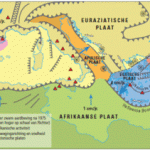 Thirdly, there could be inhomogeneous geophysical properties within a plate. (Oh look at that beautiful science jargon. It means the plate is not made of a single kind of rock.) These differences in local composition divide the stress on a plate unevenly. The stress concentrates in a single place until the rock just gives in.
Thirdly, there could be inhomogeneous geophysical properties within a plate. (Oh look at that beautiful science jargon. It means the plate is not made of a single kind of rock.) These differences in local composition divide the stress on a plate unevenly. The stress concentrates in a single place until the rock just gives in.
Lastly, there could have been a case of induced seismicity (science jargon for seismic activity caused by anything but nature itself). For example in Groningen (province in the Netherlands) there has been gas extracted from the ground. This gas used to cause counter-pressure on the soil above it, which made it strong enough to support cities on it, but with the gas taken away, the ground is weak and subsidences.
Alternatively, water leaking into ground, where soluble soil is beneath the upper layer, could cause the lower layers of the ground to dissolve, causing the same effect as the gas extraction.
Seismic activity can also be artificially produced by a herd of panicking elephants running around, but if that is the case, I am sure you have figured out the cause by yourself.
Fixing it
With natural causes there is little you can do, but induced seismicity can be dealt with. For example, you could replace the gas taken out of the ground with another gas, just make sure this gas is already in large quantities in the air so it doesn’t pose a problem when some of it escapes and definitely do not choose a gas that is explosive for obvious reasons.
For the dissolved soil, gas could also be the solution. It is easier to inject gas in the ground then try to fill up the ground with new rock. (Liquid rock followed by cryogenic gas (gas that can freeze stuff) should work in theory, though I do not think it is possible to do in real life. Then again, this is science fiction.)
Lastly, calm the herd of panicking elephants down and make sure to neutralise whatever set them off.
References:
- Fillingim, M. (1999, March). Intraplate Earthquakes: Possible Mechanisms for the New Madrid and Charleston Earthquakes.
- How the Earth is changing: Inside the Earth.
- Plate Tectonics.
- Dr. Shabestari, K., Dr. Pondbriand, C. & Fobert, K. (2013, July). Earthquake Risk Due to Hotspot Volcanoes: The Case of Hawaii.
- Drs. Pol, van der, R. (2014, september). Systeem aarde Plaatbewegingen wereldwijd VWO GB54e druk 2014.
- (2015, January). Stikstof oplossing voor bevingen.


